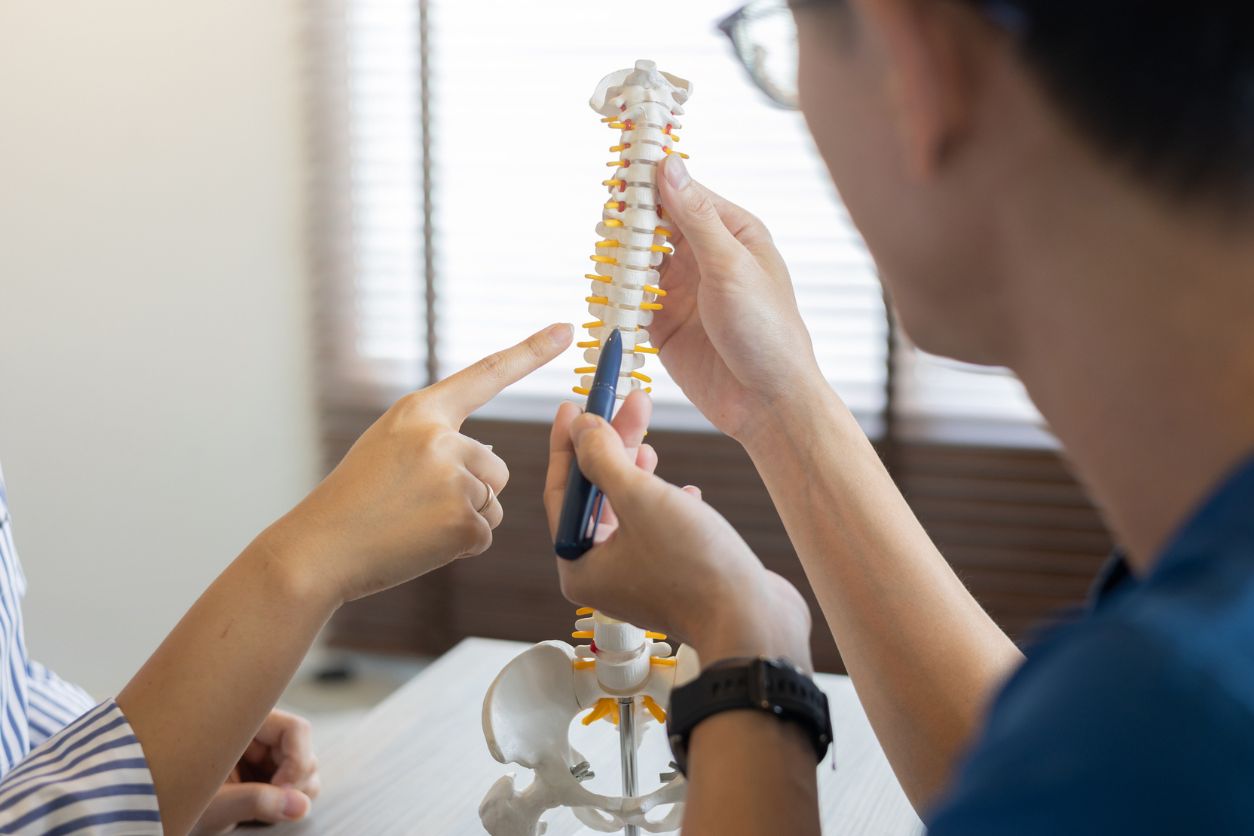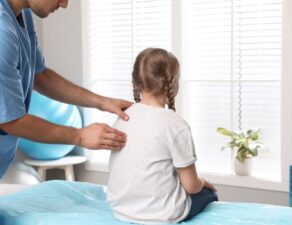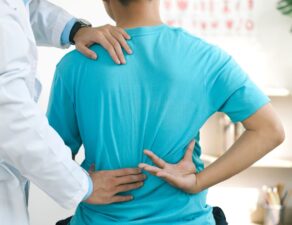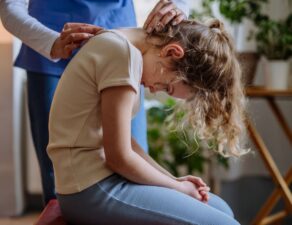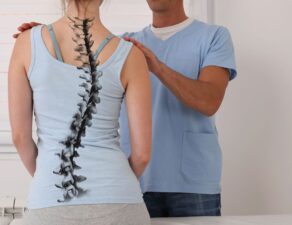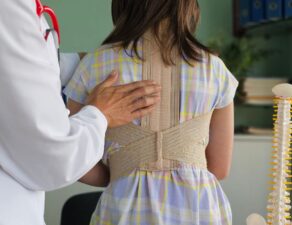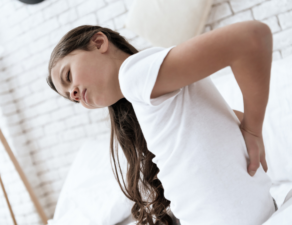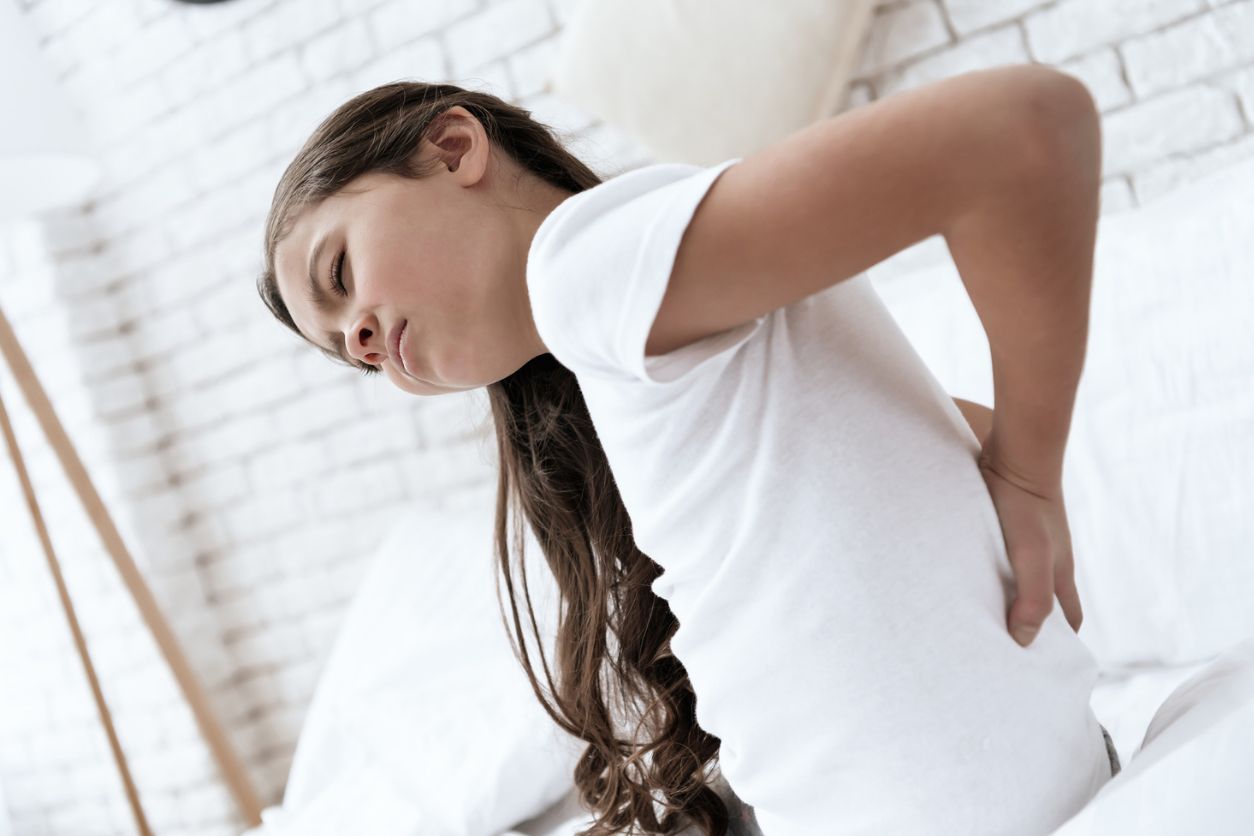
If your child has been complaining about lower back pain, you’re not alone in your concern. While many parents assume back pain is just an adult problem, the reality is that lower back pain in kids is more common than most people realize, and it shouldn’t be ignored.
As a pediatric orthopedic surgeon specializing in spinal conditions, Dr. David Siambanes has treated countless young patients whose back pain was initially dismissed as “growing pains” or temporary discomfort. The truth is, persistent lower back pain in kids can signal underlying issues that deserve proper medical attention, from scoliosis to the surprisingly significant impact of everyday factors like school backpacks.
Why Lower Back Pain in Kids Is Different
Children’s spines are still developing, making them both resilient and vulnerable in unique ways. Unlike adults who often experience back pain from degenerative conditions or workplace injuries, lower back pain in kids typically stems from different causes, many of which are preventable or highly treatable when caught early.
The concerning part? Studies show that adolescents who experience back pain are more likely to deal with chronic back problems as adults. That’s why identifying and addressing the root cause during childhood is so important for your child’s long-term spinal health.
Common Causes of Lower Back Pain in Kids
Muscle Strain and Overuse
Active kids involved in sports, especially those requiring repetitive motions like gymnastics, football, or dance, can strain back muscles and ligaments. While physical activity is essential for healthy development, improper technique or overtraining can lead to pain.
Poor Posture
Hours spent hunched over desks, tablets, or smartphones can strain the developing spine. When kids consistently sit with rounded shoulders or crane their necks forward, they’re putting unnecessary stress on their lower back.
Heavy Backpacks
This is a big one that deserves special attention. The weight kids carry to and from school every day can have a significant impact on their spinal health.
Scoliosis
This sideways curvature of the spine often develops during growth spurts. While mild scoliosis may not cause pain initially, progressive curves can lead to discomfort and require intervention.
Spondylolysis and Spondylolisthesis
These conditions involve stress fractures or slippage of vertebrae and are particularly common in young athletes who hyperextend their backs repeatedly.
Inflammatory Conditions
Though less common, conditions like juvenile arthritis can cause persistent back pain in children and require specialized treatment.
The Backpack Problem: What Research Reveals
Here’s something that might surprise you: the backpack your child carries to school every day could be a significant contributor to their lower back pain.
Dr. Siambanes investigated this very issue in a comprehensive study published in the Journal of Pediatric Orthopaedics, titled “Influence of School Backpacks on Adolescent Back Pain.” The research team examined 3,498 students across two California counties, measuring their weight, backpack load, and prevalence of back pain.
The Findings
The research revealed that nonspecific mechanical back pain was highly prevalent among adolescents. When controlling for factors like age, socioeconomic status, walking to school, and how the backpack was worn, the study found that backpack weight, measured as a percentage of body weight, was statistically significant in predicting back pain.
Girls and students who walked to and from school were more likely to report back pain. And when it came to pain severity, older age, walking to school, and the method of wearing the backpack all played statistically significant roles.
What does this mean for your child?
The weight of a backpack relative to your child’s body weight matters. A load that might seem manageable to you could be placing excessive strain on your child’s developing spine, especially if they’re walking significant distances or wearing the backpack improperly.
Warning Signs Parents Should Watch For
Not all back pain requires immediate medical attention, but certain red flags warrant a call to a pediatric spine specialist:
- Pain that persists for more than a few weeks
- Pain that wakes your child at night
- Numbness, tingling, or weakness in the legs
- Visible changes in posture or the way your child walks
- One shoulder or hip appearing higher than the other
- Difficulty bending or moving normally
- Pain accompanied by fever or unexplained weight loss
- Back pain following an injury or fall
If your child exhibits any of these symptoms, it’s time to seek professional evaluation. Early intervention often means simpler, more effective treatment options.
Practical Tips to Reduce Backpack-related Back Pain
Choose the Right Backpack
Look for wide, padded shoulder straps and a padded back panel. A waist strap helps distribute weight more evenly across the body rather than concentrating stress on the shoulders and spine.
Mind the Weight
Your child’s backpack should weigh no more than 10-15% of their body weight. For a 100-pound child, that’s just 10-15 pounds maximum. Work with your child to remove unnecessary items daily.
Wear It Properly
Both shoulder straps should always be used, positioned snugly on both shoulders. Wearing a backpack on one shoulder creates uneven weight distribution and can lead to muscle imbalances and pain.
Pack Smart
Heavier items should be placed closest to the back, with lighter items toward the front. This keeps the center of gravity closer to the body’s natural alignment.
Consider Alternatives
Rolling backpacks can be a good option for children who have a significant distance to walk or carry particularly heavy loads, though they’re not practical for navigating stairs.
When to Seek Specialized Care for Lower Back Pain in Kids
If your child’s back pain isn’t improving with rest, proper backpack use, and home care measures, it’s time to consult with a pediatric orthopedic specialist. Some conditions, particularly scoliosis, are much easier to treat when detected early.
During an evaluation, a comprehensive physical examination is conducted along with a review of your child’s medical history. Imaging studies may be used to identify the source of pain. Whether the issue is muscular, postural, or related to a spinal condition like scoliosis, having an accurate diagnosis is essential for developing an effective treatment plan.
Expert Pediatric Spine Care in the Tampa Bay Area
If you’re concerned about lower back pain in your child, Dr. Siambanes is here to help. He specializes in both the diagnosis and treatment of pediatric spinal conditions, including scoliosis.
As the founder of Scoliosis Care and director of the scoliosis center at St. Joseph’s Children’s Hospital, Dr. Siambanes has dedicated his career to helping children and adolescents achieve optimal spinal health. His research on backpack safety and extensive clinical experience treating young patients gives him unique insight into the challenges today’s children face.
Serving Families Throughout Tampa Bay and Beyond
Located in the Tampa Bay area, Dr. Siambanes welcomes patients from throughout the region, including families from Tampa, St. Petersburg, Clearwater, Brandon, Wesley Chapel, and surrounding communities. His practice is built on the understanding that children’s spinal health requires specialized expertise, not just general orthopedic care.
Take the first step toward identifying the cause of their lower back pain and creating a treatment plan that gets them back to being a kid, active, happy, and pain-free. Request a consultation today.


